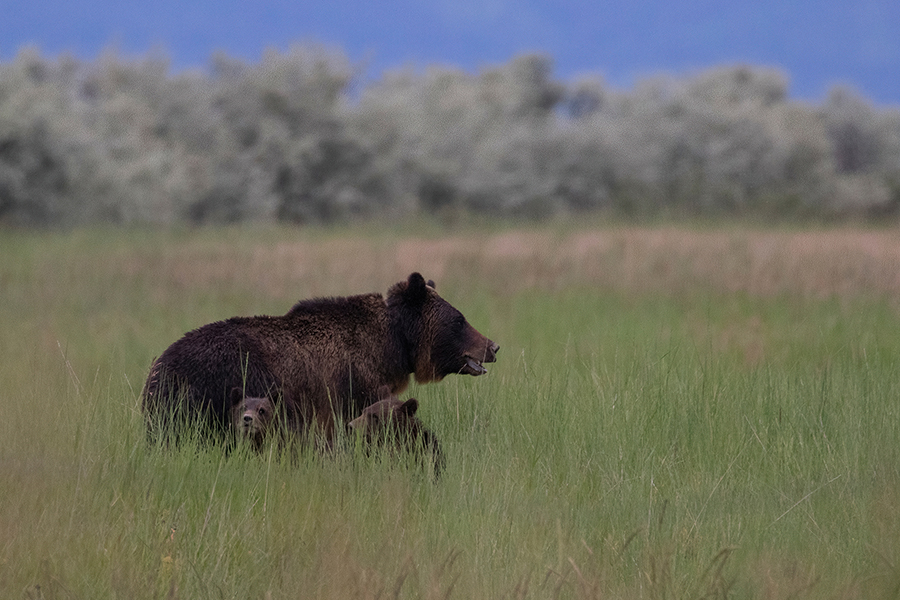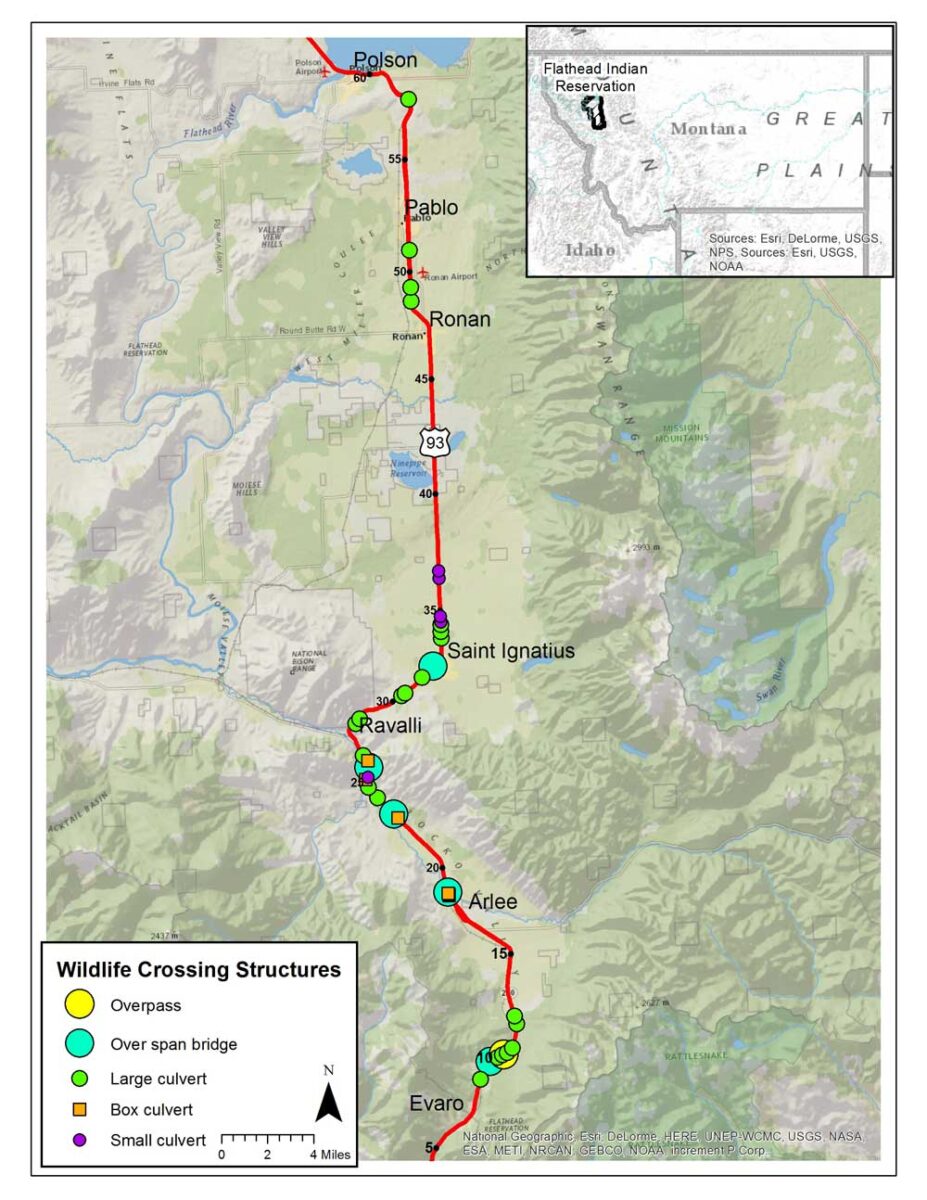CSKT Receive Grant to Construct Wildlife Overpass Spanning U.S. Highway 93
The $8.6 million grant through the Federal Highway Administrations Wildlife Crossings Pilot Program is aimed at reducing vehicle-wildlife collisions around the Ninepipe National Wildlife Management Area
By Micah Drew
On Sept. 4, 2020, just after 2 a.m., one of western Montana’s most well-known grizzly bears ambled out of a brush-covered culvert and onto U.S. Highway 93, just south of the Ninepipe National Wildlife Refuge.
Known as “Griz-40,” the old matriarch had been radio collared in the late 1990s by researchers who tracked her movements throughout the Swan Valley and Mission Mountains. In that time, she mothered at least nine cubs, and was a grandmother at least 11 times over.
In 25 years, Griz-40 had never ventured further west than the edge of the Mission Mountains, until the early fall of 2020. After stepping onto the pavement in the dark hours of the morning, an ambulance transporting a patient for emergency medical services collided with the bear, who was rendered “unsalvageable” according to biologists.
Every year, maintenance crews with the Montana Department of Transportation and tribal officers collect more than 6,000 wildlife animal carcasses, primarily large mammals, from the state’s roadways. Wildlife-vehicle collisions (WVCs), whether lethal to the animals or not, contribute to more than 10% of all car accidents in Montana, a statistic that ranks Big Sky Country as the second-highest risk state for a WVC, according to data analyzed by State Farm.

New federal funding authorized by the Bipartisan Infrastructure Law is aimed at reducing the number of WVCs across the country. In early December, the U.S. Department of Transportation announced that the Federal Highway Administration’s Wildlife Crossing Pilot Program awarded more than $109 million to 19 projects that will increase roadway safety in high-risk areas, including on the Flathead Indian Reservation.
“Every year, too many Americans are injured or killed in crashes involving cars and wildlife, especially in rural areas – but President Biden is tackling this challenge through these first-ever roadway safety grants,” U.S. Transportation Secretary Pete Buttigieg said in a press release.
The Confederated Salish and Kootenai Tribes (CSKT) received an $8.6 million grant to construct a wildlife overpass spanning U.S. Highway 93, known as “The People’s Way,” within the Ninepipe National Wildlife Management Area, close to where Griz-40 took her last steps.
Constructing the wildlife crossing will be a final piece to a decades-long effort to mitigate WVCs along Highway 93 between Evaro and Polson.

From 2009 to 2010, the CSKT, in conjunction with the Montana Department of Transportation and the Federal Highway Administration, constructed 41 wildlife crossing structures along the highway. The most obvious structure to passing motorists is the “Animals’ Trail,” a 197-foot-wide vegetated bridge that spans the busy highway near Gray Wolf Peak Casino at the southern end of the reservation. The other wildlife crossing structures include culverts, underpasses, crossing guards, 18 miles of wildlife fencing and 60-jumpouts, all designed to prevent animals from intersecting with cars at any given point.
The efforts have proved successful, according to a follow-up report released in 2016, with more than 22,648 successful animal crossings recorded annually.
During a monitoring period from 2011 to 2015, wildlife cameras captured 6,626 animals crossing the Animals’ Way overpass, including 6,076 white-tailed deer, 30 black bears, 59 coyotes, 25 elk, and three moose.
Data from the same period showed grizzly bears using wildlife crossing structures in the Post Creek area, just south of Ninepipe, at least 19 times.
“Mitigation measures associated with the reconstruction of U.S. 93 North through the Ninepipe wetland area should, in general, have long sections of wildlife fences (preferably continuous) with wildlife crossing structures that are suitable for grizzly bears,” the report concluded.
More recent studies have shown that larger mammals, including grizzlies, are more likely to utilize large crossing structures, such as overpasses, than smaller culverts and underpasses. The Ninepipe overpass was specifically designed with grizzlies in mind.
Animal crossing structures draw a lot of support from Montanans. According to Colorado College’s State of the Rockies Project Conservation in the West Poll, which was released in February, 86% of Montanans support constructing additional wildlife crossing structures across major highways that intersect with known migration routes.
In the press release announcing the funding, Federal Highway Administrator Shailen Bhatt said the projects will greatly reduce the number of collisions between motorists and wildlife. “These roadway safety investments will ensure that motorists and wildlife get to their destinations safely and are a win-win for safety and the environment.”


